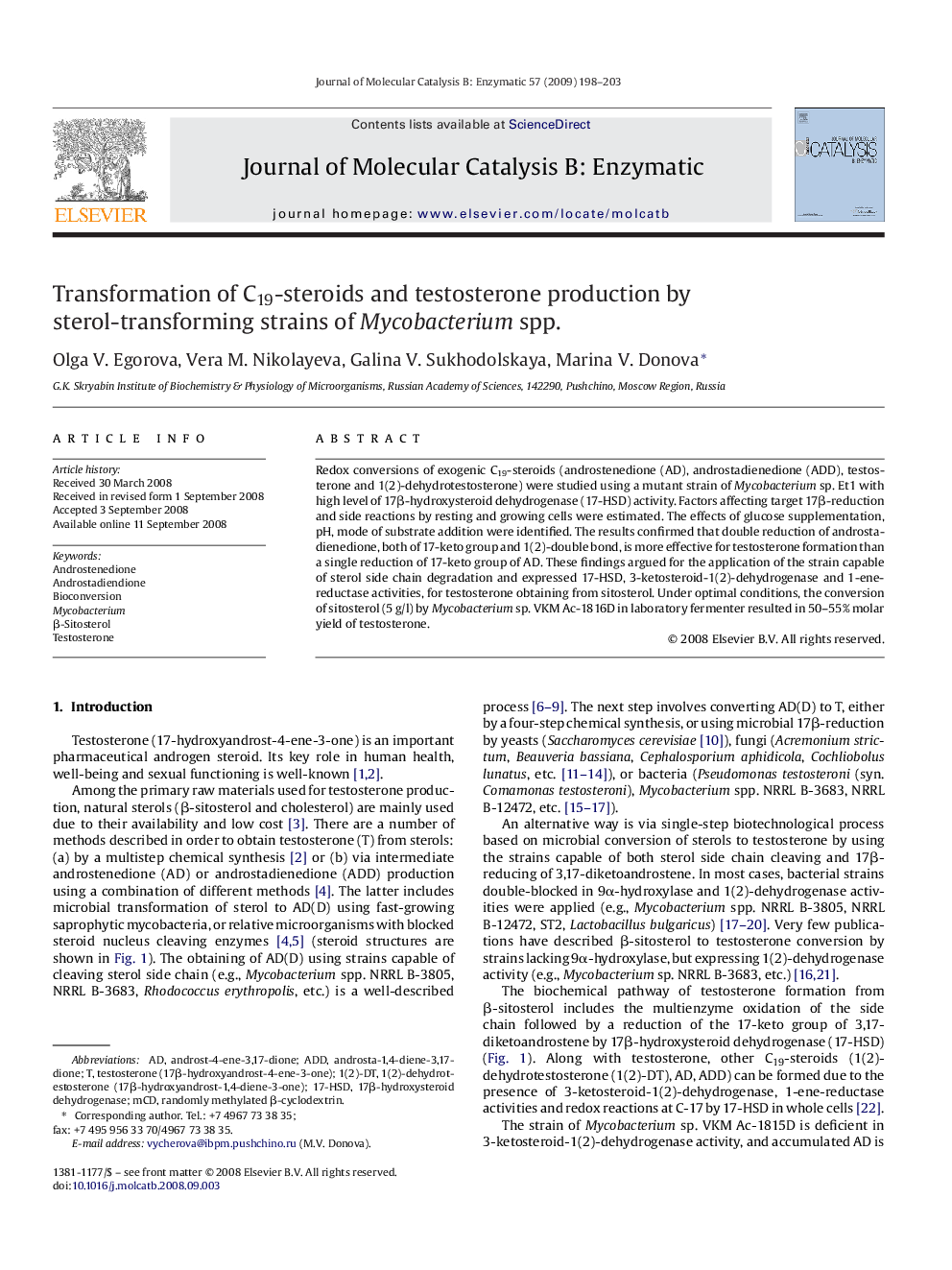| Article ID | Journal | Published Year | Pages | File Type |
|---|---|---|---|---|
| 70597 | Journal of Molecular Catalysis B: Enzymatic | 2009 | 6 Pages |
Redox conversions of exogenic C19-steroids (androstenedione (AD), androstadienedione (ADD), testosterone and 1(2)-dehydrotestosterone) were studied using a mutant strain of Mycobacterium sp. Et1 with high level of 17β-hydroxysteroid dehydrogenase (17-HSD) activity. Factors affecting target 17β-reduction and side reactions by resting and growing cells were estimated. The effects of glucose supplementation, pH, mode of substrate addition were identified. The results confirmed that double reduction of androstadienedione, both of 17-keto group and 1(2)-double bond, is more effective for testosterone formation than a single reduction of 17-keto group of AD. These findings argued for the application of the strain capable of sterol side chain degradation and expressed 17-HSD, 3-ketosteroid-1(2)-dehydrogenase and 1-ene-reductase activities, for testosterone obtaining from sitosterol. Under optimal conditions, the conversion of sitosterol (5 g/l) by Mycobacterium sp. VKM Ac-1816D in laboratory fermenter resulted in 50–55% molar yield of testosterone.
